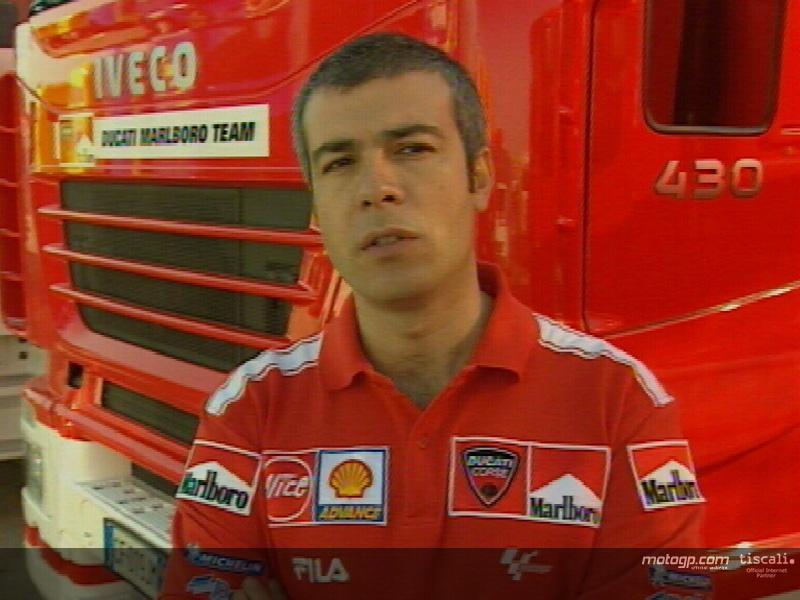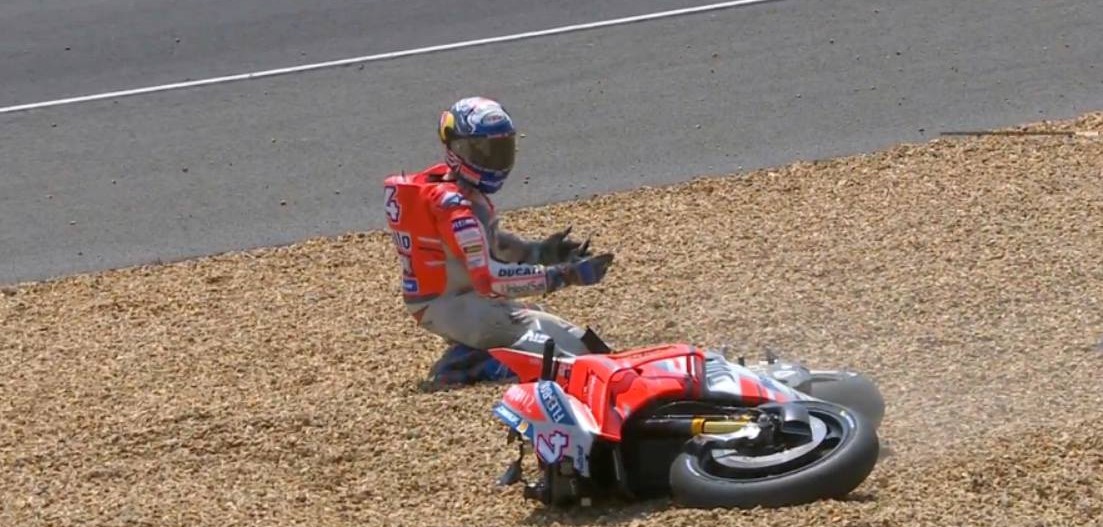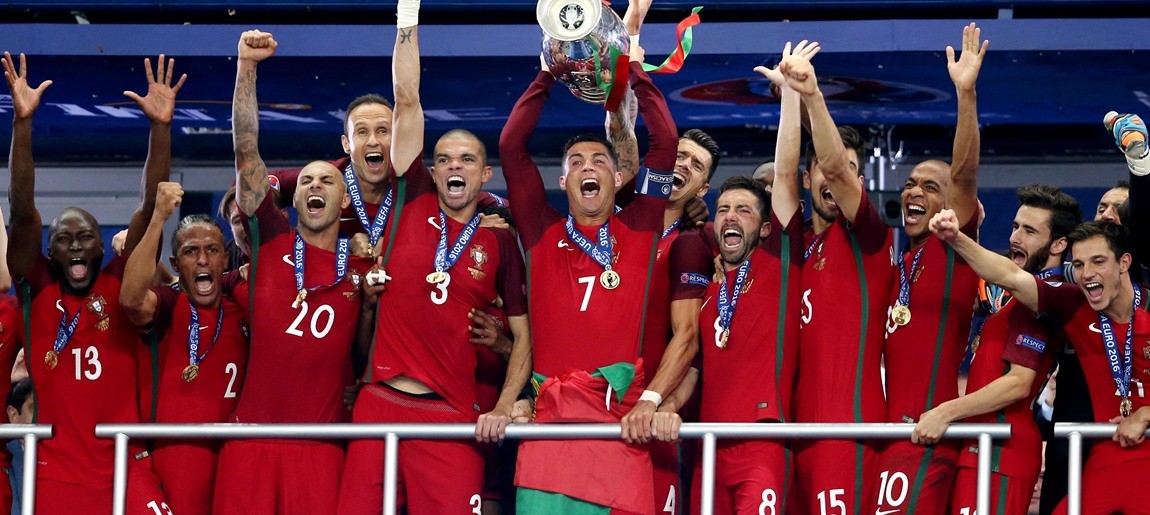MotoGP traction control: ‘Retarding and cutting’
Peter McLaren
3 Feb 2020
‘If traction control is a mix of retarding and killing, anti-wheelie is a mix of retarding and throttle’ – Corrado Cecchinelli, MotoGP Director of Technology.
MotoGP traction control has all-but-eradicated the brutal on-throttle highsides of the 500cc era, thus improving safety while allowing riders to tease the very limits of their tyres, for longer.
But how does it work?
While the obvious purpose of traction control is to stop wheelspin getting out of hand, some spin – perhaps as much as 15-20% – is essential for maximum performance.
The aim of modern MotoGP ‘TC’ (programmed by teams via the unified electronics) is therefore not to stop wheelspin entirely. Instead, the goal is to optimise it, meaning to match a ‘target spin’ for each scenario, by dancing between a complex blend of power-cutting behaviour.
Crash.net spoke with MotoGP Director of Technology Corrado Cecchinelli to find out more…
Crash.net:
What are the different methods of traction control used in MotoGP?
Corrado Cecchinelli:
“First, there are a mix of behaviours that a motorcycle can make, some that we call ‘fast’ and others we call ‘slow’.
“The wheel spinning or losing traction is considered as a fast phenomenon, as opposed to wheelies which are slow.
“If you have a fast phenomenon you have no choice but to work with ignition. Because of how fast the engine is turning and how many times the engine fires.
“The way the traction control strategy works is that it starts by retarding the ignition, so that the engine still feels good but is less powerful, or softer.
“Next comes ignition killing. So the engine gets rough but the power cut is much more and still fast.
“Then finally comes throttle closing, which is very ineffective in controlling traction. Only if you do a very long wheelspin on purpose will the throttle sooner or later close. But not for a brief loss of traction.
“So, in simple terms, what the teams and manufacturers can do is to tune the amount of these three interventions and the amount of spin at which one takes over from the other.
“To my knowledge, the throttle [closing] is never involved in a race situation. It’s always a mix of retarding the ignition and cutting the ignition.”
Crash.net:
Retarding the ignition happens first and then cutting of the ignition if the spin continues?
Corrado Cecchinelli:
“Normally yes. Because the retarding is a much smoother action than ignition. So if you don’t need too much, we are talking about milliseconds, it’s much better if retarding is enough.
“For controlling slow movements like wheelies, closing the throttle is preferably used because it’s the smoothest method of all and the engine still feels good with a lower output.
“If traction control is a mix of retarding and killing [cutting], anti-wheelie is a mix of retarding and throttle. You normally don’t need to kill the ignition because it’s slower.”
Crash.net:
Is the traction control time-based, so if the spin is not reduced after ‘X’ amount of time retarding the ignition, you then switch to killing the ignition? Or is it quantity based, so low levels of spin use retarding and high levels use ignition?
Corrado Cecchinelli:
“It’s very complicatedly based on the amount of residual spin and rate of spin. So if you are spinning too much or if you are starting to spin faster, you switch to the next action.
“There are pre-set patterns for the actions, where you move from one to the other, depending on residual spin and rate of spin.
“For instance, if your spin is too high but the rate of spin is slowing down, you go softer with the intervention. So it’s not time based, it’s effect based.”
Crash.net:
Do you always climb up from retarding to cutting the ignition to get the spin under control and then step back down from cutting to retarding as the unwanted spin disappears?
Corrado Cecchinelli:
“This is tuning. You can choose a mix of both, or you can choose to jump from one to the other.”
Crash.net:
Michelin said the ideal spin for maximum traction with their tyres is roughly around 15%, depending on compound etc. Is there a narrow band of spin percentage that the teams are always trying to stay within, using the traction control?
Corrado Cecchinelli:
“This is not a question for me because the system makes the calculations in terms of searching for what is called the target spin. And the target spin is the number you, the engineer, put as a target for each situation.”
Crash.net:
And each situation is different depending on lean angle, throttle opening…
Corrado Cecchinelli:
“Not only that. The target spin may change depending on a new or used tyre. Which is why the riders change engine maps during the race. It might also vary depending on the track sector, the extreme case being wet vs dry.
“The system is always working to meet the target spin, which is whatever the engineers want it to be for a particular circumstance.”
Crash.net:
How do the engineers decide what the target spin should be across all of these situations and different tyre compounds? Is it just trial and error?
Corrado Cecchinelli:
“It’s not possible to calculate everything within the resources available to the teams. For instance, the relationship between ideal spin and tyre wear is empirical. Because they don’t have the tyres or specialised machinery to test analyse.
“So I think the teams play around, using the information from Michelin. Maybe they find out from track testing that one of their riders likes to have more spin with used tyres than the other.
“Actually, the relationship between spin and tyre degradation is not like people think, in that normally in terms of pure performance the worse the grip level the higher the ideal spin.
“So it’s the opposite of the traction control in your car, which is set-up so that when in so-called “rain” configuration (or whatever the name of the mildest console switch position) less wheelspin is allowed.
“But the ideal spin needed on snow, for maximum performance, is actually much higher than the spin on dry asphalt.
“What I’m saying is that the spin level that gives the most forward traction with a used tyre is higher than the spin you would choose for a new tyre. But then it becomes a matter of controlling it for the rider.
“So maybe the rider will ask for less spin with the used tyre because it’s too difficult to control. In which case you would just go with what the rider wants and forget about all the theory we’ve just spoken about! Or maybe they want less spin in a particularly challenging corner when the tyres are used.
“15% is a general indication, more than a permanent target for everyone, in every situation.
“But the size of that number is interesting because it’s a long way from 0% and you can clearly understand why the rear tyres degrade during a race. Because they are constantly spinning.”
Crash.net:
If more spin means more forward traction with a used tyre, is it possible that when a rider changes the map late in a race, they might even go to a more aggressive setting?
Corrado Cecchinelli:
I don’t think so, but I really don’t know. I may guess that when they plan to switch to a bespoke calibration for the last part of the race, this will imply a stricter [traction] control at big lean angles as – regardless of all the above theory about ideal spin – controlling big wheelspin, at big lean angles and when the rider is tired may not be the best compromise for maximum performance, compared to an easier and safer [traction control] tuning.”







